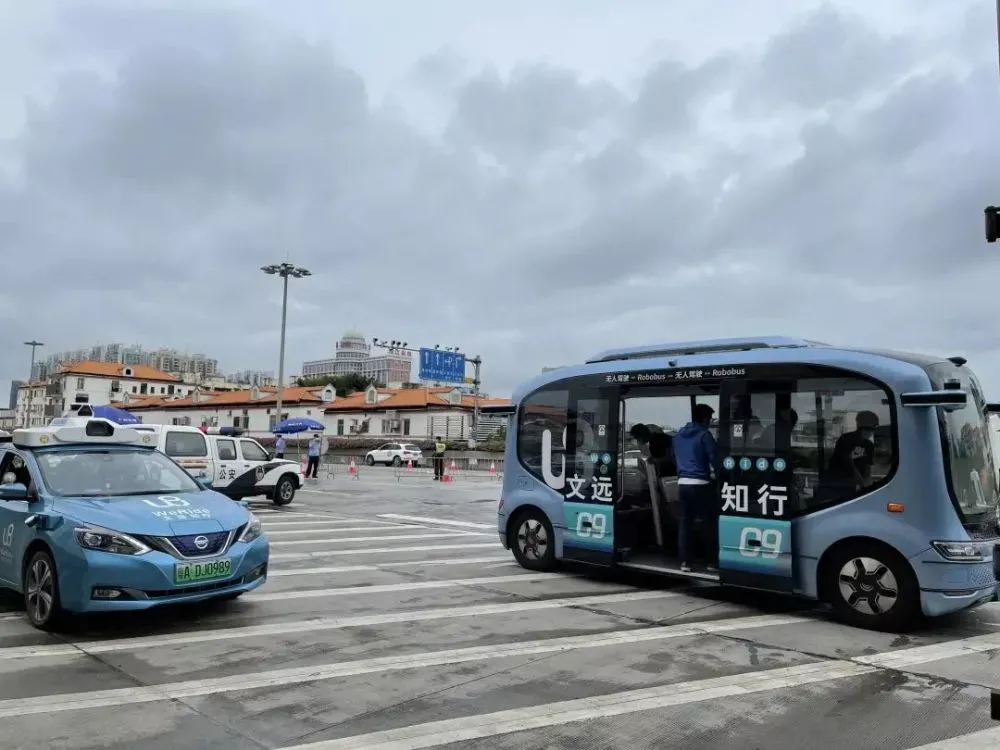Introduction
Although the concept of autonomous driving is currently popular and various companies have different development strategies, there is a consensus that large-scale implementation is not yet feasible in any scenario at this stage. Therefore, many people question autonomous driving technology, especially when they see safety officers on autonomous vehicles, making the convenience and safety brought by automatic driving seem like a distant dream. However, in the current national fight against the epidemic, unmanned vehicles have finally found their use and demonstrated the qualitative changes brought about by technology to people for the first time.
Autonomous driving vehicles heading to closed-off areas in epidemic prevention
Recently, epidemic prevention and control in Guangzhou is at a critical moment, and residents in the risk control zones of the Liwan District cannot leave their homes, as they participate in the “stay-at-home” epidemic control. At present, there are already 180,000 people under closed management in the Liwan district, which has brought great pressure to the material guarantee. For example, personnel transporting materials must undergo nucleic acid testing every time they leave the closed area, and some areas are “one-way only,” which may affect material transportation efficiency. Under these conditions, how to connect material distribution has become a critical issue, and the local organization’s unmanned vehicle team has taken on the heavy responsibility of transporting materials from non-risk areas to epidemic risk areas.

Starting from June 4th, Guangzhou’s autonomous driving enterprises began to send unmanned vehicles to support the transportation of materials in epidemic control zones. Among them, Wenyuan Zhixing became the first team to enter the Liwan district. The materials transported included two Mini Robobuses and two Robotaxis, and no personnel were equipped in the vehicles. After arriving at the destination, local workers would directly receive the materials to avoid the risk of cross-infection among frontline personnel.
As an advanced demonstration city of autonomous driving, many autonomous driving start-ups are located in Guangzhou. In fact, since last year, some autonomous driving companies in Guangzhou have obtained permits from the government to conduct on-road tests without safety officers, and the first fully unmanned driving road test license in China was issued to Wenyuan Zhixing, which was just in time for the epidemic.
On these Mini Robobuses, there are no traditional automobile parts such as a steering wheel, accelerator, and brake. Perception relies mainly on the four laser radars carried around the vehicle. According to Wenyuan Zhixing, the Mini Robobus can carry up to 10 people, with a load capacity of 1.2 tons, and can travel at a speed of up to 40 km/h.
Multiple autonomous driving companies join the fight.During the epidemic, some sections of the road were closed and there were very few vehicles on the road. This situation was very suitable for the operation of autonomous vehicles. However, the transportation of goods to epidemic control zones was not smooth sailing. According to the on-site playback report by Wenyuan Zhixing, the narrow roads and numerous illegally parked vehicles on the side of the road in the epidemic area put pressure on the autonomous vehicle’s algorithm system.
In addition to Wenyuan Zhixing, companies such as Baidu, JD.com, Pony.ai, and EHang have also successively launched unmanned cars or drones for transporting goods in the epidemic control areas. Baidu Apollo has deployed a total of 9 autonomous vehicles, including logistics delivery vehicles weighing 500kg, cooked food delivery vehicles, the 1-ton Apollo, the 2-ton Robobus, and shared autonomous vehicles.
On the afternoon of June 4th, Baidu’s 4 unmanned cars had arrived in Liwan District and the remaining vehicles will also arrive over the weekend. These autonomous vehicles do not require safety officers and are remotely controlled through 5G cloud driving.
Meanwhile, Pony.ai dispatched automatic driving trucks with a loading capacity of over 20 tons and a maximum payload of up to 30 tons, mainly responsible for assisting in the emergency delivery of critical living materials in Dongxiang Street and Fangcun area of Liwan District.
In the forefront of the battle against the epidemic, the advantages of autonomous vehicles such as “no-contact”, “multi-function”, and “all-weather” can effectively reduce human-to-human contact in epidemic-infected areas and complete outdoor critical materials distribution while obstructing the chain of the epidemic.
At the same time, autonomous vehicles have service modules that can carry logistics transportation, thermal insulation meal delivery, mobile retail, and mobile services in different scenarios within the area, and can achieve a variety of unmanned services.
Before the outbreak of the epidemic, no one would have envisioned that autonomous driving would land in such scenarios first but without a doubt, autonomous driving technology will be a trend in the future. Its technical characteristics determine its immense development space and broad application scenarios, and the development of autonomous vehicles will quickly allow us to experience the safety and convenience brought by technology. On the battlefield of fighting against the epidemic, these autonomous driving companies have shown their social responsibilities and tested the practicality of autonomous driving technology.
This article is a translation by ChatGPT of a Chinese report from 42HOW. If you have any questions about it, please email bd@42how.com.
